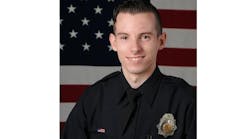Suicide bombers have become a reality in Europe, the Near and Middle East, but this terror has yet to be executed on America’s continental soil. Law enforcement organizations are continually writing suicide neutralization policies. They take their lead from the International Chiefs Association on dealing with suicide bombers. Miami Police Chief John Timoney is quoted by the age.com.au as stating
I can guarantee you that if we have, God forbid, a suicide bomber in a big city in the United States, shoot to kill will be the inevitable policy.
The International Association of Chiefs of Police condones head shots in the event of an uncooperative suicide bomber. This is a proactive and necessary resolution to eliminate an imminent threat and save lives.
Law enforcement has advanced its education in the realm of the suicide bomber. Law enforcement understands that suicide bombers are typically brain washed and motivated by false promises. The suicide bomber mentality is similar to that of newly recruited gang members: they desire to belong to a family unit, have a greater social status, particularly relating to respect, and a defined purpose.
Suicide bomber recruiters also select individuals who suffer from communicable blood disorders, such as HIV, Hepatitis and the like. This selection process ensures that the detonation of a suicide bomber not only creates an explosion with shrapnel, but a bio-hazardous situation. This combination creates for even more of a terror to society.
Departments are instilling that a head shot for a suicide bomber, arguably, is the best policy. However, execution of this practice falls under the assumption that the suicide bomber is non-cooperative. Furthermore, great trust in target acquisition is placed on the responding law enforcement officer to make the proper head shot. If the suicide bomber is cooperative, then the entire dynamic changes. Law enforcement will probably order the suicide bomber in a prone position and have that individual maintain that position until an area evacuation and a bomb explosive expert arrives. Mission accomplished, right?
What if the suicide bomber decides that, for the sake of this article, he does not want to detonate? Mr. Murphy often rides shotgun with law enforcement. Murphy's Law will dictate that the once cooperative suicide bomber is struck by reality he will have a change of opinion in detonating himself. His reality that he will not be known as a martyr, that he will disappoint his family’s name and above all, that he will not be accepted by Allah by not detonating, may alter his decision. At the last minute after being prone the bomber starts to disobey orders and appears to be making movements that would indicate that he is re-evaluating his decision and may want to detonate. His actions will surely cause concern for the officer(s) holding him at bay at gun point. Officers now have a huge conflict on their hands. If the bomber is allowed to detonate, officers may be subjecting the public to a great risk. Furthermore, they will not have the time to gain distance for self-preservation.
Traditional law enforcement close quarter weapons combat dictates that an officer should not get close enough to the suspect for fear of being disarmed. Repeated training states to Keep your distance. The bullet will hit him (suspect) from ten feet away just as easy as one foot. This is ingrained training when confronting the traditional criminal. However, when confronting a suicide bomber, especially one that goes from a cooperative state to a non cooperative state, a contact head shot is a viable solution.
As graphic as it may seem, a contact shot dramatically reduces target acquisition of a moving target. For this article, the example would be as follows: Two officers, if not more, would respond to a suicide bomber call. The suicide bomber would go into a cooperative state, prone out, and then proceed to a non-cooperative state. The cover officer would then lay on top of the suicide bomber immobilizing the bombers hands. The contact officer would conduct the direct contact shot.
Although this technique may seem overly aggressive, options and time are not on the community's side. This is one scenario that a contact shot can be utilized to effectively save innocent lives. Both officers will unquestionably experience traditional post shooting trauma from this incident. However, they will also now be faced with additional trauma of biological contamination as a result of the contact shot. Without a doubt their actions will be scrutinized in finite detail and all sorts of allegations will be made about their motivations.
American law enforcement may not be ready for such an aggressive neutralization technique. However, as we approach one decade since the September 11, 2001, terrorist attack, law enforcement has learned that traditional diffusion methods must be altered to defend against the non-traditional criminal. Understandably, a direct contact shot may not be the most popular policy or protocol for a department to adopt, but failing to alter traditional policy may result in an equally unpopular casualty rate.
Bruce Hoffman, a terrorist expert at Rand Corp, told the Washington Post
The police standard operating procedure of addressing a suspect and telling them to drop their weapon and put their hands up or freeze is not going to work with a suicide bomber. You're signing your own death warrant if you do that.
Much like the transition from the standard issued revolver to the semi-automatic sidearm, skeptics exist and condemn change. Perhaps the time has come for American law enforcement to understand the transition from ready-aim-fire, to ready-contact-fire.

Pete Eliadis
Pete Eliadis is an 18-year law enforcement veteran with intense command experience, and is the founder of Intelligence Consulting Partners, LLC (ICP). He has earned a variety of national and regional instructor certificates, as well as academic degrees from international institutions, such as Johns Hopkins University. He has been a consultant in various combative and intelligence fields for many years. The purview of Pete Eliadis? clientele spans federal, state and local governments, as well as the private sector. His company, ICP, prides itself on innovative training with emphasis on intertwining law enforcement and civilian applications. He is nationally published in the arena of mass violence.



